Redefining What’s Possible Through Paralympic Sports
Written by |
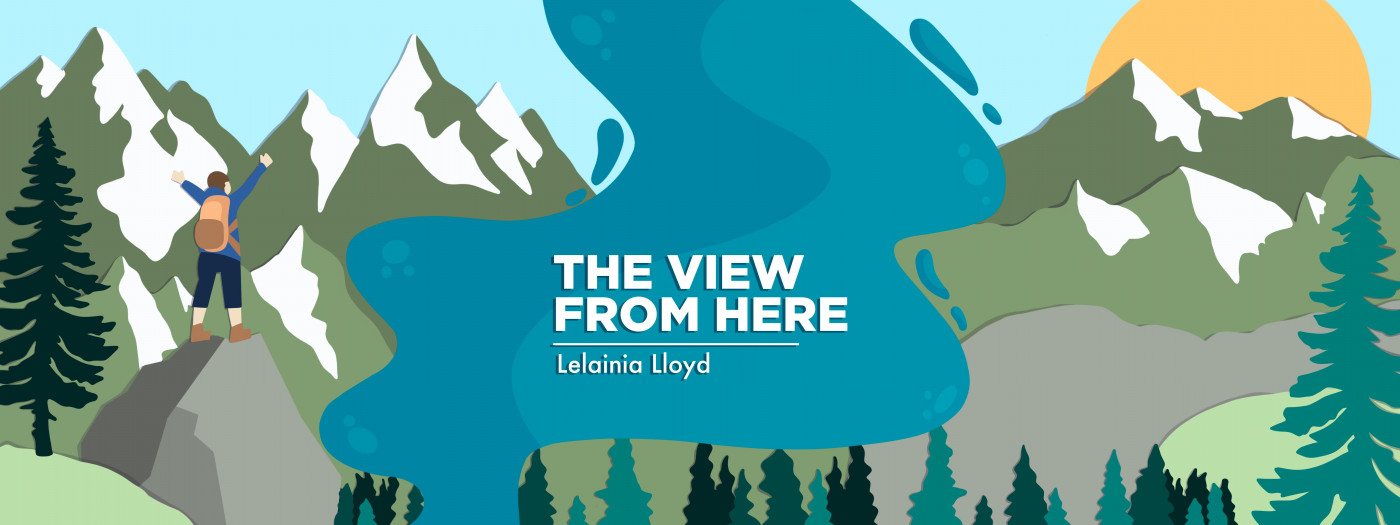
Like many Canadians, I grew up watching curling, a beloved national sport that helped make the long prairie winters more tolerable. I’d watch with my grandparents and cheer for the teams that made it to the Olympics. Curling transfixed me with its elegant combination of skill, athleticism, and drama.
In 2014, I was on my local city council’s Access-Ability committee, advising the city on matters of accessibility and inclusion. That year, the city completed a major upgrade to our local curling arena, making it fully accessible. As a result, our city was granted hosting rights for the 2014 British Columbia Wheelchair Curling Championship. When this announcement came, I called the curling club and volunteered to help host and advise on accessibility.
The club was happy to have my help, and together, we managed to organize a great event. It was the first time I ever saw wheelchair curlers in action, and it lit a spark for me. I was struck by how fierce the competition was. All of the athletes were amazing players, and I felt the same sense of awe that I’d felt watching abled-bodied curlers. Wheelchair curling had a deep and impressive talent pool.
While working with the athletes at this event, I also felt the camaraderie of their community. Everyone knew and supported one another both on and off the ice. It felt good to experience even a small piece of that.
It’s been seven years since that event, and all this time, I have been carrying the spark inside me, waiting for the chance to become a wheelchair curler myself. After receiving my wheelchair in the spring of 2020, my intention was to join curling in the fall, but as we all know, the pandemic hit and everything shut down. No curling.
Finally, it resumed last September. In order to curl, players needed to be fully vaccinated, show their vaccine passport, and wear a mask. I was finally good to go!
The club where I’m learning to play is two hours away. It’s a big time commitment, but it’s worth it to me.
The curlers I’ve met at the club couldn’t be nicer. It can be hard being the new kid on the block, but they’ve all been friendly and welcoming. I am incredibly lucky to have Paralympians teaching me to curl. I’ve been working hard to listen carefully to everything they tell me and use that knowledge to improve each week. I want them to know the time and energy they are so generously investing in me is appreciated. I love the game, and I want to learn to play decently. I’m definitely willing to put in the work.
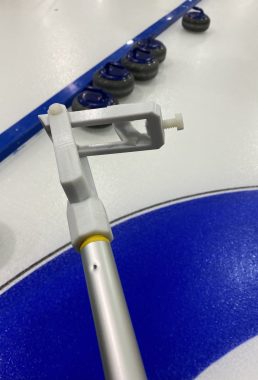
The 3D-printed attachment that slips over the handle of the rock, allowing a disabled curler to “throw” (push) it. (Photo by Lelainia Lloyd)
The beauty of wheelchair curling is that it transcends age. You can play as long as you’re able to throw stones and wheel your chair, and you can borrow equipment, making it one of the more accessible Paralympic winter sports.
The club has push sticks available to borrow. Push sticks are telescoping aluminum or plastic sticks about 5-8 feet long with a special 3D-printed attachment at the tip that hooks over the handle of the rock, allowing you to “throw” it. The funny thing is that these sticks aren’t specifically made for curling. They’re extenders for paint rollers that you would attach to paint a ceiling, available at any hardware store!
At our club, we have a mix of manual and power chair users, and surprisingly, we’re pretty evenly split between men and women curlers. Curling is a great sport for women because in competitive play, teams must have at least one female player on the ice at all times.
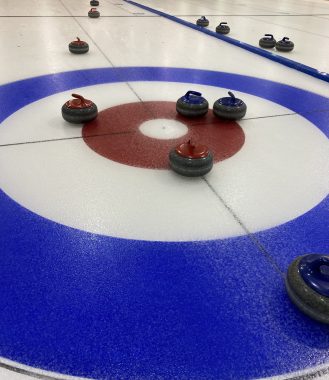
The two red rocks on the button (red circle) are mine from the first game I played. I was very proud of those shots — it’s a lot harder than it looks! (Photo by Lelainia Lloyd)
One thing I’ve discovered is that no matter how much instruction you get, no one can tell you definitively how to throw a rock. Each player must figure it out for themselves, based on their own disabilities and body mechanics. I can tell you the learning curve is steep. It’s a delicate balance between physics and art, and when I see experienced curlers make impossible shots, I feel exceedingly green. I have to keep reminding myself that everyone starts somewhere. They’ve definitely given me something to aspire to!
Having access to sports as someone with a disability is so important. It’s not just a way to connect with others and feel a sense of belonging, but it also gives me the opportunity to reclaim my physicality and redefine what’s possible for myself. Every Sunday for the next six months, you’ll know where to find me. On Sundays, we curl!
***
Note: Neuromyelitis News is strictly a news and information website about the disease. It does not provide medical advice, diagnosis, or treatment. This content is not intended to be a substitute for professional medical advice, diagnosis, or treatment. Always seek the advice of your physician or other qualified health providers with any questions you may have regarding a medical condition. Never disregard professional medical advice or delay in seeking it because of something you have read on this website. The opinions expressed in this column are not those of Neuromyelitis News, or its parent company, Bionews, and are intended to spark discussion about issues pertaining to neuromyelitis optica spectrum disorder (NMOSD).




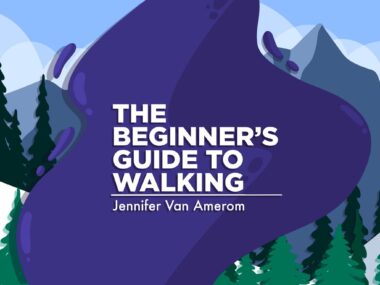
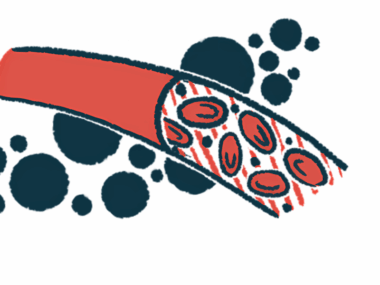
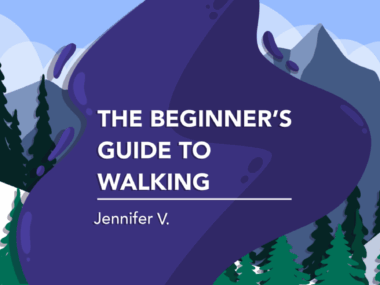
Carolyn Thomas (@HeartSisters)
Lelainia, thanks so much for sharing your experience of wheelchair curling! It sounds like so much fun - despite a 2 hour drive to get there. That is true commitment! Maybe since your city hosted the 2014 British Columbia Wheelchair Curling Championship, city hall could be convinced some day to offer wheelchair curling classes like the ones you're taking a bit closer to home!?
I'm not a curler, but some of my family members curl - my son-in-law who grew up curling in the Okanagan and (according to him) is "a FANTASTIC curler", and my 70-year old sister who has just started taking lessons for the first time ever - and is loving it! Like you, she is reminding herself that "everyone starts somewhere!" - but adds that all the other curlers have been unfailingly kind and helpful to her and all the newbies. I guess curlers are just like that!
So glad that you're doing this sport that you love!
Take care, stay safe. . . HURRY HARD!
cheers,
C.
Lelainia Lloyd
Thanks Carolyn! It was heartbreaking when the city decided to hand over the curling sheets in our fully accessible rec centre to hockey. The next closest rink in the Tri-Cities is not accessible and while the community OT said they could easily advocate for a ramp, I pointed out that a ramp wasn’t going to help-because its inaccessible, there is no established wheelchair curling league there. For me, the whole point was to be able to play with & learn from other wheelchair users.
I’m definitely loving the whole process of learning the beautiful game. It’s exciting to make improvements, not matter how small!
Vince Miele
Great article Lalainia (Marilyn?). I'm glad you feel the same way all of us that discovered wheelchair curling do...we love it. Just sorry that your home club was shut down and the next one is not accessible. I am going to send your article to Curl BC as I'm sure they too will enjoy reading it and sharing it with their members.
Lelainia Lloyd
Marilyn! Ha!
Thank you Vince. Things worked out because it meant I got to meet all of you fine people & learn from the best. It’s an honour to play with all of you.
Yes, please feel free to share.